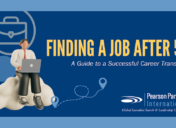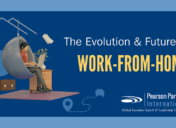Stay on Top of the Headlines and Be Ready to React

As we enter the new year in the home stretch of the presidential transition, analysts have offered both optimistic and pessimistic forecasts about the new administration’s impact on the U.S. economy. The daily headlines about Trump’s cabinet choices and potential policy decisions have made it difficult for corporate boards and senior leadership teams to plan their strategies for the coming year.
Considering this uncertainty, it makes sense for senior executives to conduct scenario-planning exercises to identify and prepare for potential threats and opportunities in 2017.
From an optimistic perspective, it’s possible the new president and Congress would approve corporate tax reductions or pass an infrastructure bill to stimulate the economy. That could help create more jobs in the manufacturing, development and construction sectors, including public-private partnerships (P3s) with U.S. companies.
Repealing the Affordable Care Act (ACA) or “Obamacare” would have repercussions for companies in the insurance and healthcare sector, including hospitals, physician groups and their suppliers. Because it may take time for a new healthcare program to take shape in Washington, companies in these sectors may want to scale back new investments until the landscape becomes clearer.
On the pessimistic side, some analysts are warning that Trump’s pledge to renegotiate or pull out of the North American Free Trade Agreement (NAFTA) with Canada and Mexico and other trade partnerships could create problems for U.S. businesses and consumers. Imposing a tariff on imported goods, for example, would raise costs and could lead to inflation. Businesses in all sectors should take a careful look at vulnerabilities in their supply chains, which typically include parts, components or products imported from foreign factories.
Trump has also stated he plans to put more restrictions on immigration. That could make it difficult for U.S. multinationals and other businesses to gain access to the global talent pool for professionals, and skilled and unskilled labor.
While both positive and negative scenarios are certainly conceivable, there are other possibilities as well. While “middle-of-the-road” forecasts generally don’t capture the headlines, they could turn out to be more accurate than more extreme outlooks.
With so many possible outcomes, it is smart for business leaders to have varying strategies planned and ready to implement, closely monitor the headlines and markets and be nimble enough to adjust plans along the way as needed.















